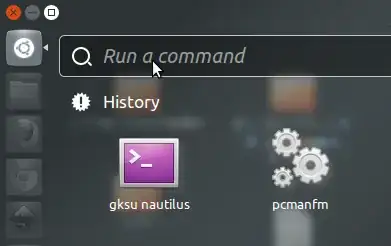Command line: use Alt+F2
Change to the directory that contain your files that you want changing. Use sudo in front of your command that changes permissions, the owner and group of those files.
You will be asked for your password and the command will execute as if you are root.
You could also do sudo su to enter root.
$ sudo su
[sudo] password for {username}:
root@{host}:/home/{username}#
Then change to the directory that contain your files that you want changing.
Permission are changed with chmod Example: chmod 755 somefile would make it read, write, execute for your as the owner and read, execute for group and others.
User and group are changed with chown Example: chown alan:alan somefile would make alan owner of somefile.
edit: after reading the link you posted I have a question! Did that topic not already answer your question? It talks about executing gksu nautilus. This option lets you use Nautilus as a root user. That would allow you to change access (see the picture in that topic).

